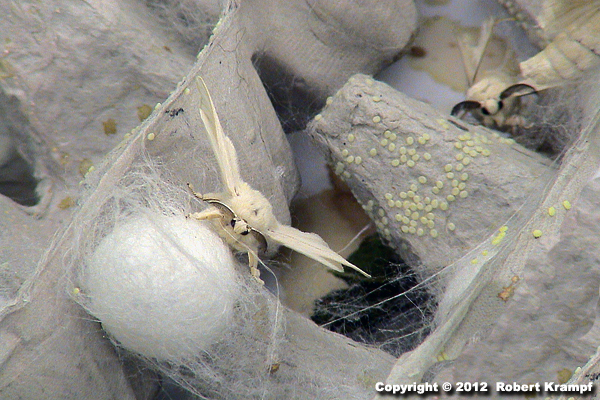
This photograph shows three stages of the life cycle of a silk moth. Which stage is NOT shown?
-
Egg
No. The light yellow dots are silk moth eggs. -
Larva
Yes! There are not silk moth caterpillars in the picture. -
Pupa
No. The white, fuzzy ball beside the moth is the cocoon, which contains the pupa. -
Adult
No. The white moth is an adult silk moth.
Click to see which state standards this question tests, and which of my videos, experiments, and other resources support that topic.
Florida
SC.2.L.16.1 Observe and describe major stages in the life cycles of plants and animals, including beans and butterflies.
| Seed Search | video, ClosedCaptions, checked |
| Review Life Cycle-1 | practice |
| Review Life Cycle-2 | practice |
| Review Life Cycle-3 | practice |
| Review Life Cycle-4 | practice |
SC.4.L.16.4 Compare and contrast the major stages in the life cycles of Florida plants and animals, such as those that undergo incomplete and complete metamorphosis, and flowering and nonflowering seedbearing
plants.
| Orange Slices | video, ClosedCaptions |
| Creating a Sprout Guide | text page, photography, free |
| Review Life Cycle-1 | practice |
| Review Life Cycle-2 | practice |
| Review Plants-4 | practice |
| Review Life Cycle-3 | practice |
| Review Life Cycle-4 | practice |
Utah
UT.5.V.1.c Compare various examples of offspring that do not initially resemble the parent organism but mature to become similar to the parent organism (e.g., mealworms and darkling beetles, tadpoles and frogs, seedlings and vegetables, caterpillars and butterflies).
| Review Life Cycle-1 | practice |
| Review Life Cycle-2 | practice |
| Review Life Cycle-3 | practice |
| Review Life Cycle-4 | practice |
NGSS
1-LS3-1 Make observations to construct an evidence-based account that young plants and animals are like, but not exactly like, their parents.
| Review Life Cycle-1 | practice |
| Review Life Cycle-2 | practice |
| Review Life Cycle-3 | practice |
3-LS1-1 Develop models to describe that organisms have unique and diverse life cycles but all have in common birth, growth, reproduction, and death.
| Review Life Cycle-1 | practice |
| Review Life Cycle-2 | practice |
| Review Life Cycle-3 | practice |
